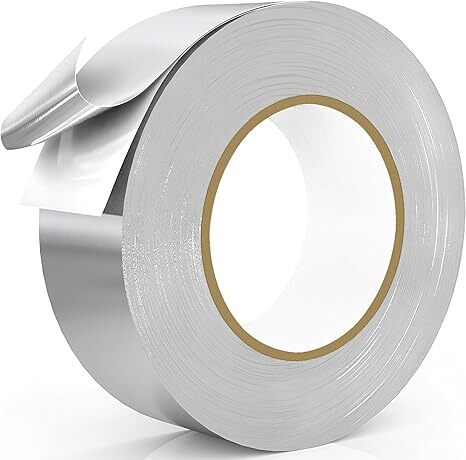In everyday life and work, surface protection films have become increasingly important. They not only protect the surfaces of various items from scratches, pollution, and damage but also effectively extend the lifespan of the items. However, there are many types of protection films on the market, and different materials have various differences in performance, applicable scenarios, and prices. Therefore, choosing the right protection film is crucial. In this article, we will provide a comprehensive comparison of the common protection film materials (such as PE film, PVC film, PET film, etc.), helping you make an informed decision.
- PE Protection Film (Polyethylene Protection Film)
Advantages:
- Good Flexibility: PE film has excellent flexibility, allowing it to cover various surfaces well, adapting to irregular shapes.
- High Transparency: PE film is highly transparent, making it suitable for applications where clarity is essential, as it preserves the appearance of the protected item.
- No Residual Adhesive: High-quality PE protection films typically leave no adhesive residue when removed, making them ideal for surfaces where cleanliness is important.
- Eco-friendly: PE is a relatively environmentally friendly plastic that meets most environmental standards.
Disadvantages:
- Poor Tensile Strength: Compared to PVC and PET films, PE film has weaker tensile strength and is prone to tearing under strong force.
- Poor Heat Resistance: PE film has limited heat resistance and can deform or melt in high-temperature environments, making it unsuitable for use near heat sources.
Suitable Scenarios:
- PE film is commonly used for protecting surfaces like glass, aluminum alloy, household appliances, and electronics, particularly when transparency and the absence of adhesive residue are important.
- PVC Protection Film (Polyvinyl Chloride Protection Film)
Advantages:
- High Strength: PVC film has higher tensile strength and abrasion resistance, providing long-lasting protection.
- Good High-Temperature Resistance: PVC film performs better than PE film in high-temperature environments, making it suitable for heat-resistant applications.
- Good UV Resistance: PVC film offers better resistance to ultraviolet light, making it ideal for outdoor or sun-exposed applications.
Disadvantages:
- Hard and Difficult to Adhere: PVC film is relatively stiff and can result in bubbles or wrinkles, making it difficult to apply to irregular surfaces.
- Environmental Concerns: PVC film has a larger environmental impact during production and disposal, and its use may not meet certain environmental standards.
Suitable Scenarios:
- PVC film is suitable for applications where higher strength and temperature resistance are needed, such as automotive paint protection, metal surface protection, and construction materials.
- PET Protection Film (Polyethylene Terephthalate Protection Film)
Advantages:
- High Transparency: PET film has excellent transparency, ensuring the appearance of the protected product remains intact, which is crucial for products with aesthetic requirements.
- Strong Scratch Resistance: PET film is more scratch-resistant than PE and PVC films, making it ideal for protecting surfaces from abrasion.
- Good UV Resistance: PET film has strong UV resistance, preventing the item’s surface from aging or fading due to sunlight exposure.
- Eco-friendly: PET is a more environmentally friendly plastic with a higher recycling value.
Disadvantages:
- Higher Hardness: While PET film is highly durable, it can be harder to apply to uneven or complex surfaces, leading to air bubbles or wrinkles.
- Moderate Heat Resistance: Although PET film offers good heat resistance, it can still deform under extreme temperatures.
Suitable Scenarios:
- PET film is suitable for high-end electronics, displays, smartphones, and appliances, where high transparency, scratch resistance, and UV protection are required.
- EVA Protection Film (Ethylene-Vinyl Acetate Copolymer Protection Film)
Advantages:
- Good Elasticity: EVA film offers excellent elasticity, making it suitable for covering and adapting to various surface shapes, especially complex ones.
- Strong Abrasion Resistance: EVA film is durable and offers long-term protection against wear and tear.
- High Transparency: EVA film typically has good transparency, allowing the protected item to maintain its aesthetic appearance.
Disadvantages:
- Higher Cost: EVA films are more expensive to produce, which results in a higher market price.
- Poor High-Temperature Resistance: EVA film has relatively poor heat resistance compared to PET and PVC films and is not suitable for high-temperature environments.
Suitable Scenarios:
- EVA film is often used for high-end electronics, optical instruments, and products that require high transparency and protection.
- OPP Protection Film (Oriented Polypropylene Protection Film)
Advantages:
- High Transparency: OPP film offers excellent transparency, which is ideal for showcasing products, especially for packaging purposes.
- Good Tensile Strength: OPP film performs well in terms of tensile strength, providing effective surface protection.
- Smooth Surface: OPP film is smooth and prevents dust and dirt from sticking to the surface of the protected items.
Disadvantages:
- Weak Adhesion: Compared to other protection films, OPP film has weaker adhesion and may peel off after prolonged use.
- Not Suitable for Complex Surfaces: OPP film is relatively rigid and does not adhere well to irregular or complex surfaces.
Suitable Scenarios:
- OPP film is ideal for protecting paper products, cards, and packaging materials, especially when surface appearance and dust prevention are important.
Conclusion
When selecting the right protection film, it is crucial to consider the material and the environment in which the protection film will be used. PE film is suitable for transparent applications with a requirement for residue-free removal; PVC film is best for applications that require abrasion resistance and high-temperature protection; PET film offers excellent transparency, scratch resistance, and UV protection, making it ideal for high-end products; EVA film is excellent for protecting complex surfaces, although it is more expensive; and OPP film is ideal for dust prevention and surface protection in packaging, though it is less suitable for complex shapes.
By understanding the pros and cons of each material, you can choose the most appropriate protection film for your specific needs, ensuring effective protection while extending the lifespan of your items.
Read our related blog – Types and Applications of Industrial Adhesive Tapes. For regular updates, follow us on LinkedIn.






